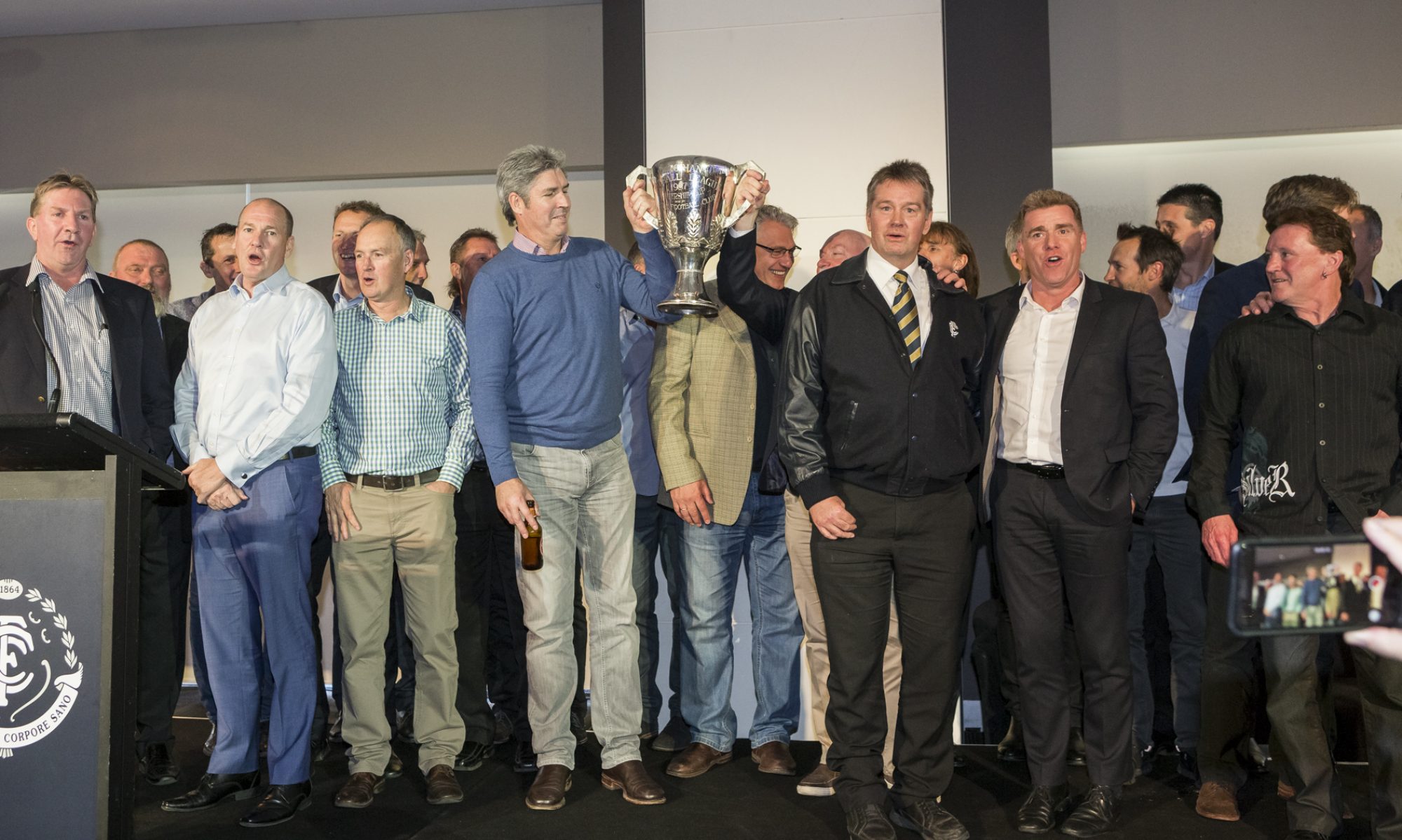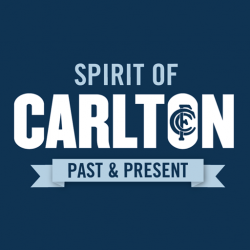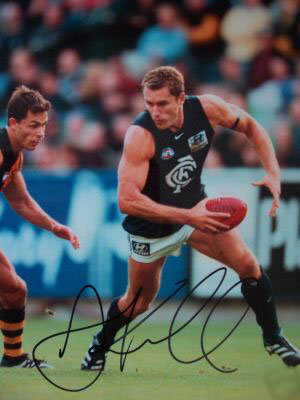UNRAVELLING THE BIZARRE ESSAY Number 13 – Ted Hopkins
###Was Juddy tall enough for the Carlton Captaincy?
Whichever way, ‘pushed’ or ‘relinquished’ is immaterial. Chris Judd is no longer the Carlton Captain and not even a member of the team’s leadership group.
The move appears like the Prime Minister mysteriously announcing she is no longer interested in the job; instead of heading to Cabinet, she chooses to sit on the backbench.
How bizarre!
All teams thrive on good captaincy, and in Carlton’s case, premiership captains are revered.
In the modern era—at least from 1968 onwards—the typical profile of a Carlton premiership captain is a celebrated ‘big bloke’ who can play tall and fill a key position role; viz, John Nicholls (Big Nick) three times (1968, 70, 72), Mike Fitzpatrick twice (1981, 82), and Stephen Kernahan twice (1987, 95).
Although Alex Jesaulenko (1979), was a mere ‘six footer and a bit,’ overhead he was unstoppable and could dominate in the key positions of centre-half-forward or full-forward.
On face value, it appears there is a direct correlation between height and overhead ability and Carlton premiership captaincy success.
Judd does not fit the mould, prompting the question: Was he ever tall enough for the captaincy?
Oddly, he is a surprisingly tall 189cm—the same height as Big Nick—yet has played almost exclusively as a rover, an indication of the changing shape of our game. In his five seasons with Carlton and 105 games he has taken only 33 contested marks. His contested mark average of o.3 per game is #38 for all Blues players during this time.
Following this logic, he could never have succeeded as a Carlton premiership captain. His successor should be Matthew Kreuzer, not the current favourite candidates, all shorties, Marc Murphy, Kade Simpson, and Andrew Carrazzo.
However, beware!
Just because something correlates doesn’t means it’s true.
There are a myriad of reasons Judd has not become a premiership captain at Carlton and has now stepped aside; some obvious, some that can only be guessed at, some that will never be divulged, and plenty of pure bad luck.
He is a gold-plated player and individual serving the Blues and the role with great distinction. And he is a proven premiership captain at West Coast (2006, having assumed the role from the disgraced Ben Cousins).
As someone who is credited with igniting the modern day statistics revolution in Australian sport (The Stats Revolution published by Slattery Media), I am constantly bewildered by the selective use and misuse of data by coaches and commentators who are either statistically naive or pushing barrows.
Without the hint of a smile and headlined by major media outlets, newly appointed coach, Mick Malthouse, recently launched the Carlton Blueprint, including statistical benchmarks guaranteeing unprecedented success.
He claimed his superior game plan would improve the team by five to seven percent, “which I think is realistic. I won’t say 10 percent.”
He attributes another three to four percent improvement due to young players getting, “a year older, which is in my favour.”
His special understanding of the AFL fixture and preparation methods is expected to yield him “another two to three percent.”
And finally, better team selection policies and game day rotations will account for an additional, “two to three percent” improvement.
Based on these projections, it would appear Carlton is certain to win every game next season. The premierships cup is already in the cabinet.
How bizarre!
The wonder is the new coach and club is not officially pinged for false advertising.
More convincing than the Blueprint would have been a proper explanation as to why Judd is no longer captain.
So far, all that is offered are diplomatic niceties and weasel words.
The value of captaincy is one of those things that cannot be statistically verified. Only the views of the protagonists can provide insight.
Game theory attributes two main attributes for captaincy.
Firstly, consistency mixed with bursts of inspiration. In this domain, Judd is supreme. He rates highly for the leader who declares “come and follow me into the heat of battle.”
If there is criticism of this form of leadership, it is because teammates can become too dependent upon the leader, or retreat because they cannot meet the high expectation he has shown.
It which case, it is not Judd’s problem. It is a sign others surrounding the captain fall short.
If this is how the new coach and club see it and they are now throwing down the gauntlet by disconnecting the captain, then it should be said.
Otherwise, unfair speculation falls upon the capability and contribution of Judd.
The other main attribute for captaincy is strategic thinking and organisation.
The past three premiership captaincies are rated high in this regard—Nick Maxwell (Collingwood) Cameron Ling (Geelong), and co-captains Adam Goodes and Jarrad McVeigh (Sydney).
How a captain or team leaders deploys this attribute is mostly experienced internally. External observers can gain some insights when the captain is demonstrative on and off the field.
However, reticence and subtle demeanour can also be just as effective (which may be the case with Judd). Unless you are involved intimately with the club and the individual, it is difficult to know the score.
At Carlton (29 games 1967 – 1971), I had the privilege of playing under our revered captain, John Nicholls. Privately, he appeared introverted. On the field, he loomed large.
In the dressing room before my first game, the experienced and debonair centre-half-back, John Goold, sat quietly beside me and said, “If Big Nick says something to you on the field, do it.”
As second rover, for the first centre bounce I attended, Big Nick said, “stand over there.”
The ball hit me on the chest and I was away.
The second time I attended, again Big Nick issued instructions where I should stand.
The ball never came to me.
Afterwards, I asked ‘Gooldy’ what happened.
‘Gooldy’ said, “You were the decoy.”
You can’t put a price or a stat on good captaincy and leadership, but you know when it happens.



